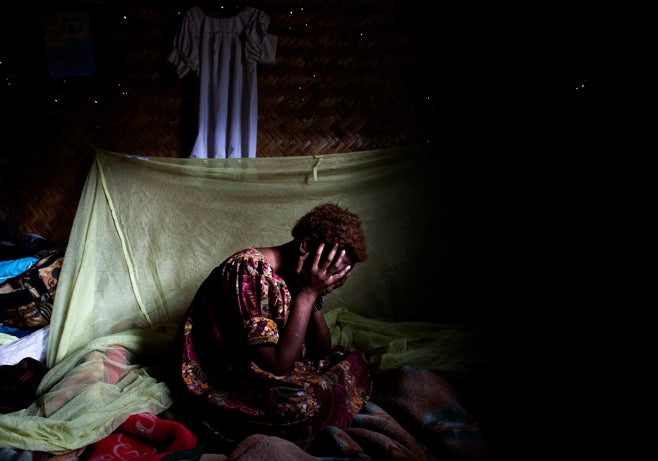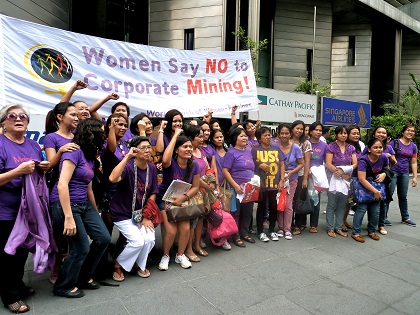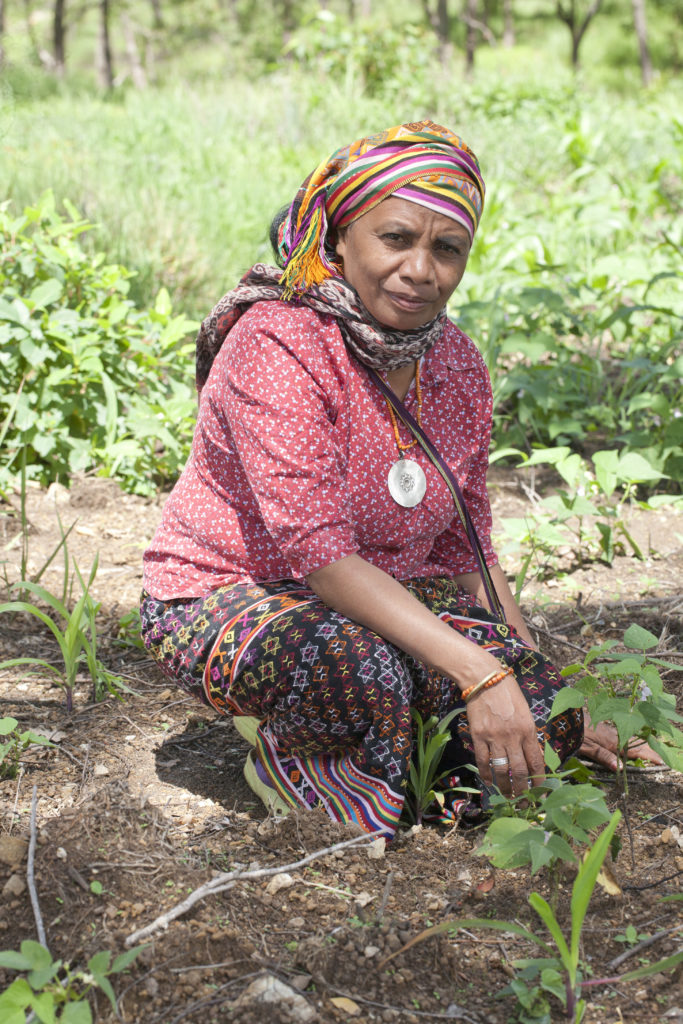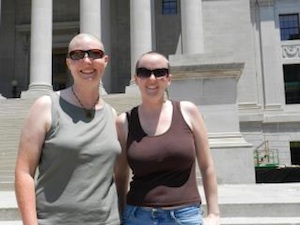
How many women are raped in order to produce the world’s gold? How many women are chased off their land, kicked out of their own social structures, and otherwise beaten down in the pursuit of mineral resources? Ask the women of Papua New Guinea.
The Porgera open-pit gold mine in Papua New Guinea is a good old-fashioned money, and blood, pit: “The mine has a terrible reputation for both human rights abuses (rapes, beatings and killings by security personnel) and environmental damage (vast quantities of potentially toxic tailings dumped into a nearby river). But gold prices, while down from their recent peak, are still three times what they were a decade ago, so dig they must.”
The Porgera mine, owned by the Canadian company Barrick, is rich. In the last two decades, the mine has produced over 20 billion dollars worth of gold. Barrick is rich. Papua New Guinea is poor. Almost a third of the population lives in dire poverty. Around the Porgera mine, it’s worse. As happens so often around `wealthy’ mining sites, the area has experienced severe “social disintegration.” The local communities derive little benefit from the mines, and what benefit they get is slotted to the men. Gender inequality increases. Women become both absolutely and proportionately poorer and more vulnerable. Bride price and polygyny increase dramatically. Women’s status declines. Women’s customary abilities to negotiate dwindle. Abandonment of women and children rises. Domestic violence both increases and intensifies.
Three years ago, a major report investigated and confirmed repeated incidents of gang rape of local women by Porgera’s private security firm. All of the women were brutally beaten. None of the women reported the rapes. What would have been the point? Another report, this one from last year, noted: “A number of the women whose assaults had become public knowledge were stigmatised, beaten by family members or divorced by their husbands.”
The women started organizing and issued demands. What happened? At first, nothing. Then … Barrick created a “remedy program for victims”. This included “the requirement that to receive compensation, women must waive their right to sue Barrick.”
In order to get help, in order to get compensation, the women have to sign away their rights. First, Barrick denied and stonewalled for five years. Then they bullied and bullied some more, all in the name of `remedy.’ The United Nations `recommended’, and the world `condemned.’ No matter. The Barrick non-judicial grievance mechanism remains in place, opaque as ever. Here’s how one witness describes it: “Many women were not aware of the remedy program, others were suspicious of it, and we found general lack of clarity about the process. Women said that the program was being run in a language that they could not understand and that they had not been offered translation. Women said that the things they were being offered through the program were either not what they needed to address the harm they had suffered, or not compatible with culturally appropriate remedies for the type of harm they had suffered, or simply not commensurate with the harm they had suffered. The primary things these women were being offered were baby chickens to raise and second hand clothes to sell. The program seemed to be confusing small scale development programs with remedy.”
There is no confusion. The founder and chairman of Barrick explained that the sexual violence at Porgera occurred because, in Papua New Guinea, “gang rape is a cultural habit.” It never happened, we weren’t there, and anyway it’s your fault, even though it never happened. Barrick was there, Barrick is there … and in Tanzania … and … How many women? How many more women?
(Photo Credit: Brent Stirton/Getty Images for Human Rights Watch)


